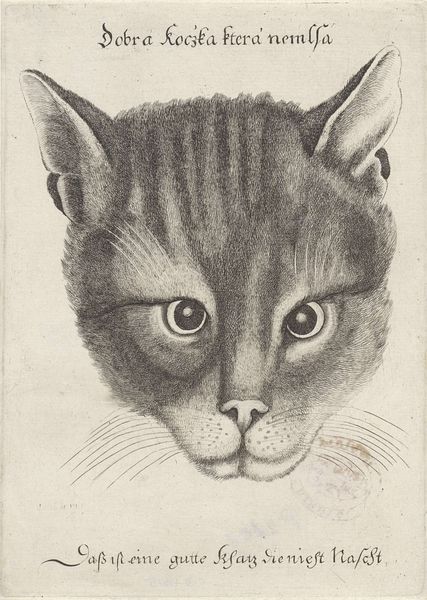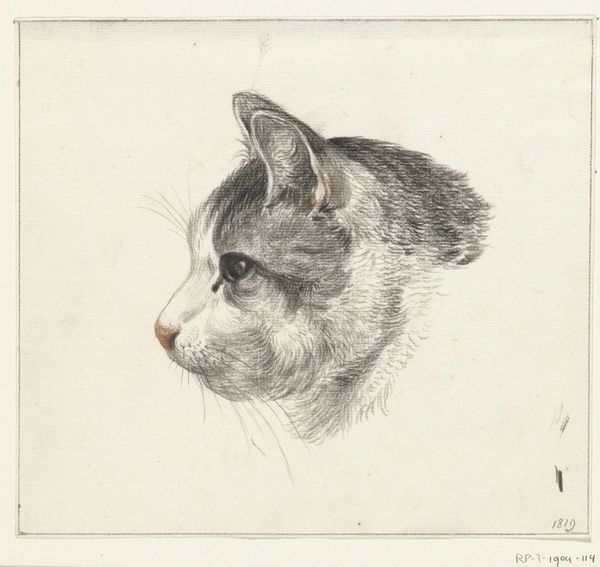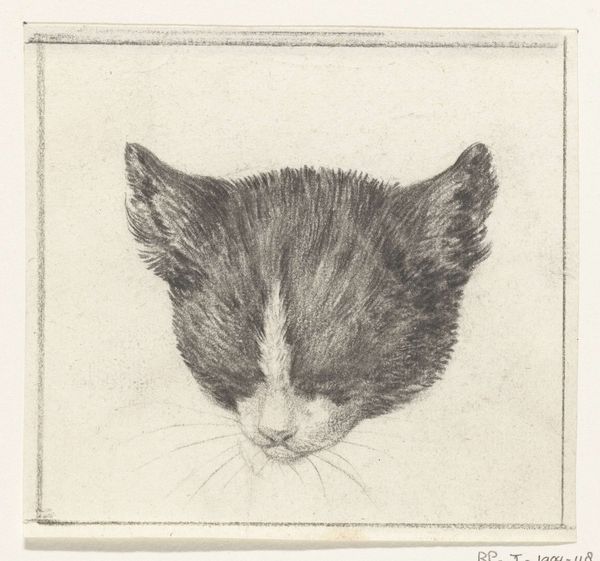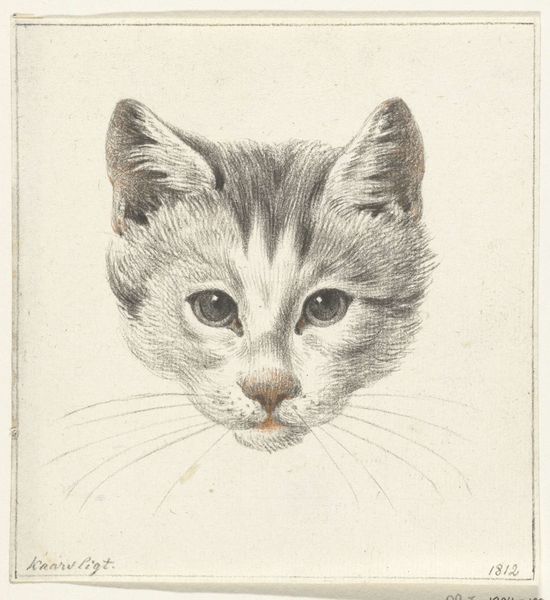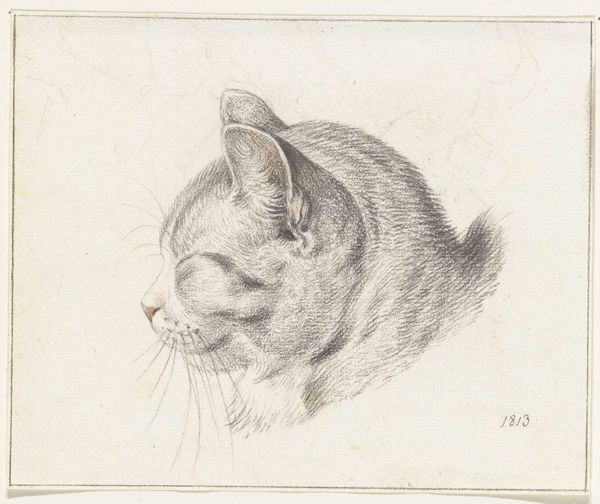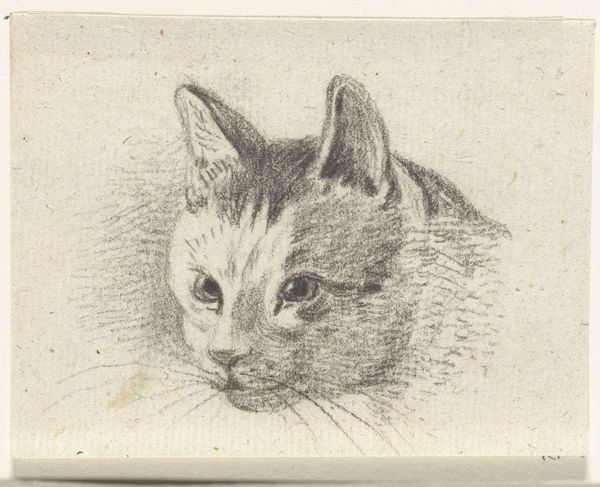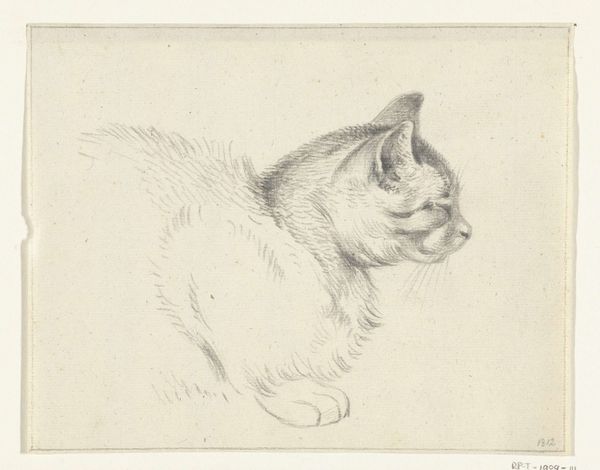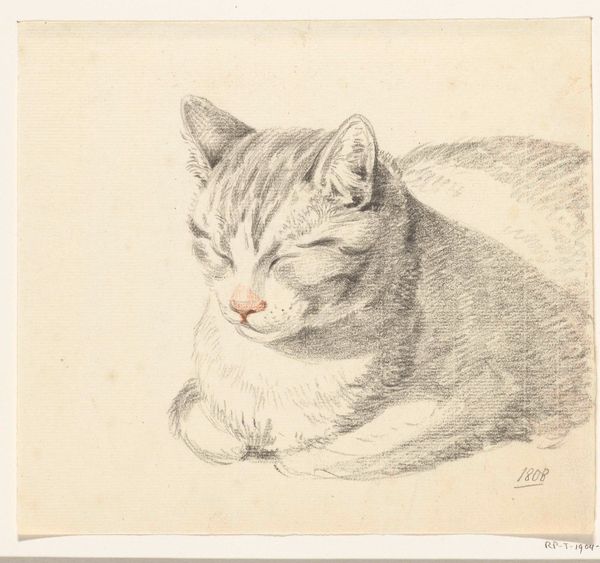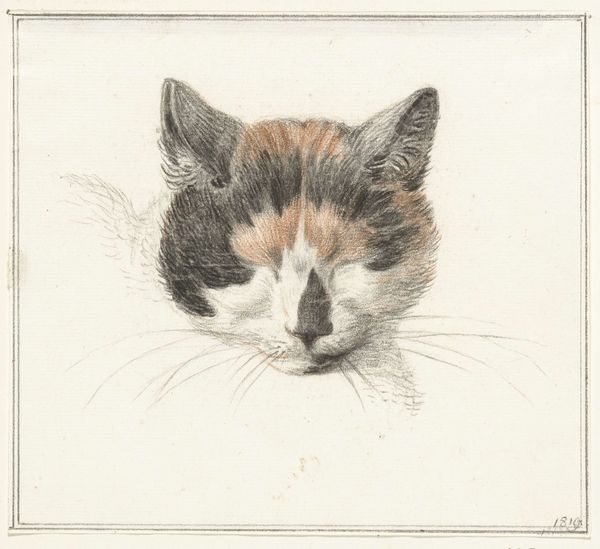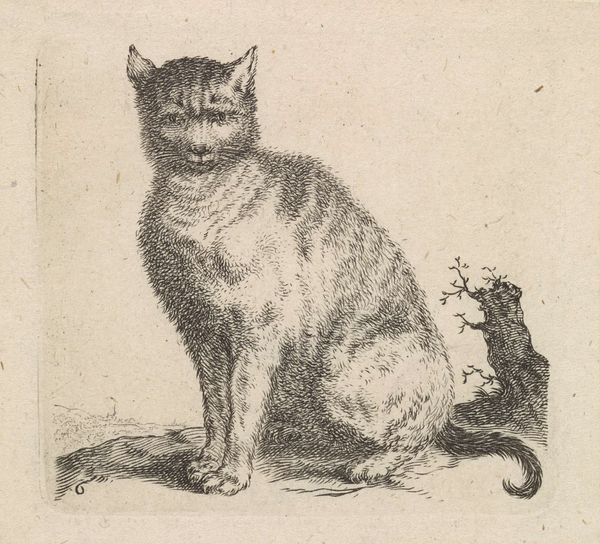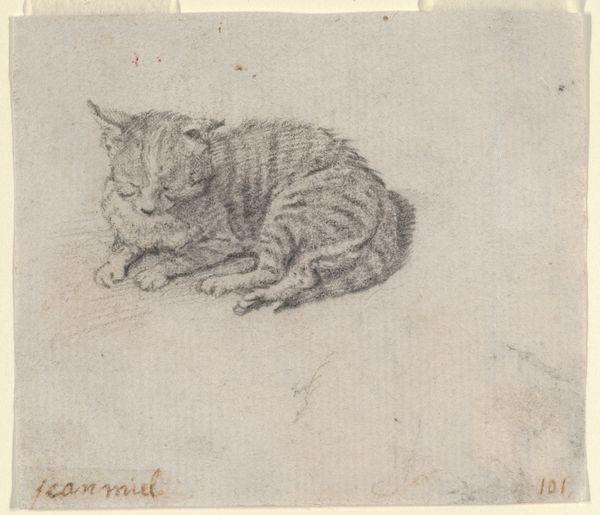
drawing, print, etching
#
portrait
#
pencil drawn
#
drawing
#
animal
# print
#
etching
#
pencil sketch
#
pencil drawing
#
realism
Dimensions: height 86 mm, width 70 mm
Copyright: Rijks Museum: Open Domain
Editor: Here we have Cornelis Steffelaar's "Kop van een kat," which translates to "Head of a Cat," dating from sometime between 1807 and 1861. It appears to be an etching, a detailed close-up of a cat’s face, and it has a rather pensive, almost stern mood to it. What strikes you most about this print? Curator: I'm immediately drawn to the tension between domesticity and the animal’s inherent wildness, especially given the socio-political context of the 19th century. Urbanization was on the rise, altering human-animal relationships. Steffelaar’s cat isn't merely a pet, but perhaps a commentary on this changing dynamic. What do you think of how the artist portrays the animal? Editor: That’s an interesting take! I was more focused on the purely artistic aspects—the incredible detail achieved through etching. It feels like Steffelaar is elevating a common subject to fine art. The intensity of its gaze is hard to ignore. Curator: Exactly! That elevation speaks volumes about how societal values were shifting. Cats, often associated with the lower classes or even witchcraft in earlier periods, were gradually gaining acceptance and even affection in bourgeois households. This etching participates in that shift by representing a cat in the dignified manner of a traditional portrait. Does this animal portrait make you consider the class dynamics and emerging public role of companion animals in the 19th century? Editor: Now that you mention it, framing it as more than just a study does make sense. So, a seemingly simple image of a cat reveals larger societal trends! Curator: Precisely. The art world doesn’t exist in a vacuum. Understanding the historical context allows us to read this work on multiple levels. Editor: That's fascinating! I’ll definitely consider the social implications of art more closely from now on. Curator: Excellent. Remember that even the smallest details can offer insights into the past.
Comments
No comments
Be the first to comment and join the conversation on the ultimate creative platform.


